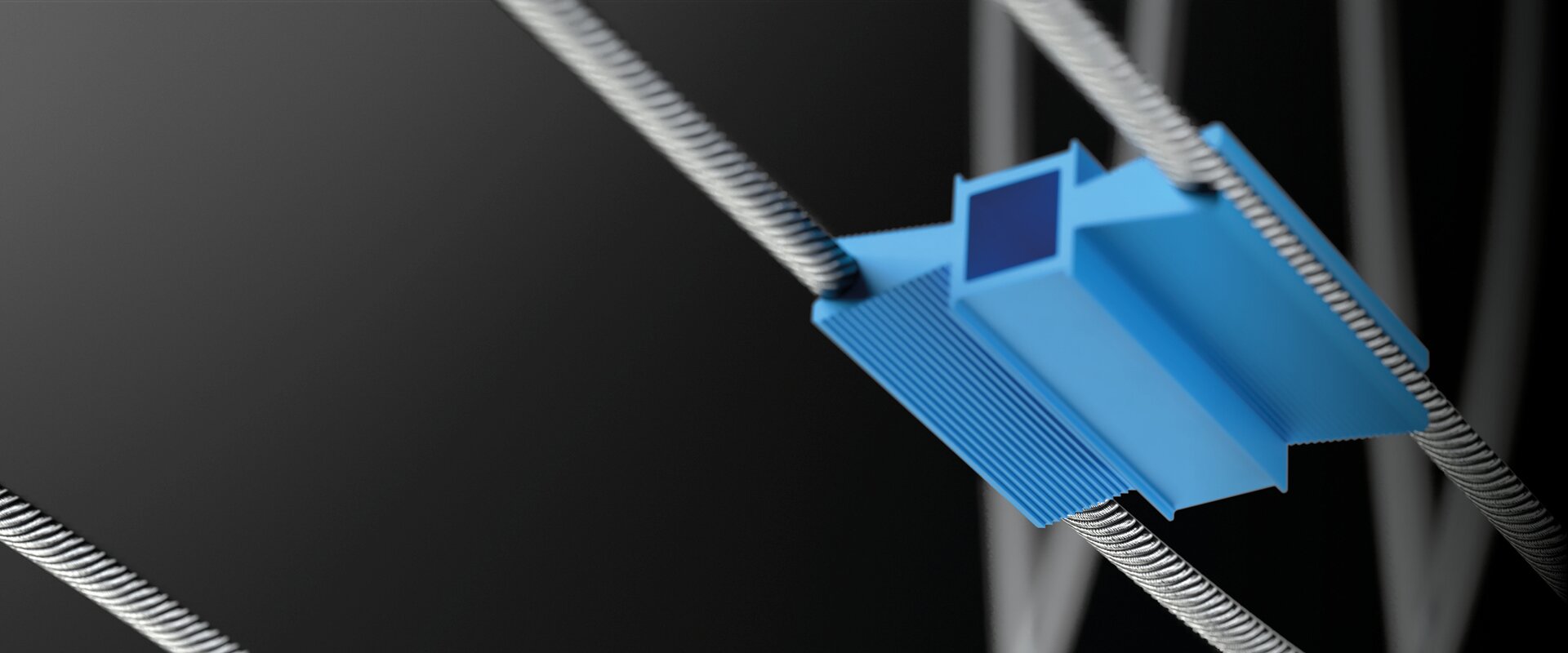

Houses have a lifespan of well over 50 years. During this time, the owner does not want to incur unnecessary follow-up costs for repairs to fixtures and fittings. This also applies to sun and privacy protection using the increasingly popular aluminium composite venetian blinds. Their durability is attributable to various quality features. Of course, manufacturers cannot produce everything themselves. They need reliable suppliers to help them with quality concerns. These supplier products also include the plastic profiles in the slats and guide rails of the blinds. An interview with a medium-sized Swiss manufacturer and its profile supplier.
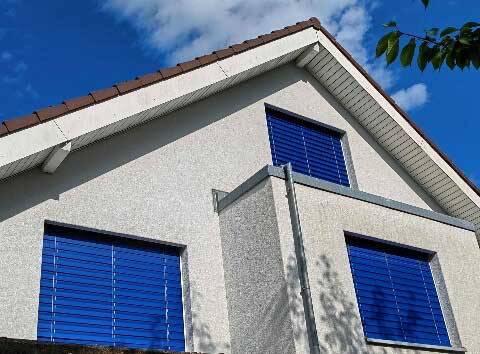
Colourful, friendly and inviting: slat blinds on a residential building.
‘A merciless price war is ravaging the construction sector, forcing me to compete against major domestic and international suppliers’, explains Hanspeter Ottiger, business owner of Lam-In Bau AG in Mühlau (Switzerland). That’s why he has little chance with large-scale projects, where the lowest price is usually the deciding factor. His customers are primarily store owners, mostly medium-sized workshops that place great value on offering their customers traditional Swiss quality. He serves this market with products focussed on robustness and durability. For example, he continues to use sheet metal with a thickness of 0.43 mm, whereas large suppliers often only use 0.38 mm. Instead of a wet coating, his sheet metal is always treated with textured coating, which is more appealing. And when he punches the holes for the drawstrings, he avoids sharp edges by using a counter-punch that produces rounded flanging. This reduces the risk of premature chafing of the drawstrings. They are also 8 mm wide instead of the 6 mm often found today. He uses weather-resistant chromium steel for the hooks used to attach the suspension cords on both sides. They can also be opened so that the suspension cords can be replaced, if necessary.
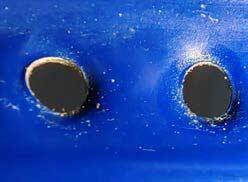
Example of a quality issue: After just a few years, an inadequately riveted guide bolt tore out of the slat of one of the blinds.
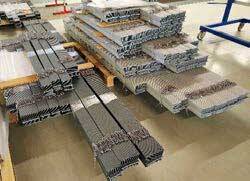
Uniform stack formation plays a key role in the fully assembled slat packs.
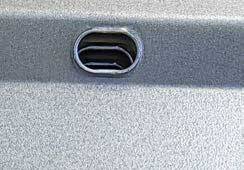
Quality features: Punched holes rounded by flanging protect the drawstrings, while the textured paint ensures an attractive appearance.
‘I need reliable suppliers even for seemingly unimportant supplier products such as the plastic profiles for noise damping’, adds Hanspeter Ottiger. These profiles, known as piping, are rolled into the front edge of the aluminium slats with their round core during production. They have a long, curved lip that prevents direct metallic contact when the slats are raised. Without this protection, they would collide in gusts of wind, resulting in unpleasant rattling noises and damage to the paintwork. He originally purchased these profiles from another manufacturer. Unfortunately, this supplier became less and less reliable over time, which caused him major headaches in production. The decisive factor was a constantly fluctuating quality, in particular due to deviations in the dimensions. This led to expensive rejects during the continuous production of the slats in the rolling mill. The defects often only became apparent after rolling, meaning that half-finished lamellae had to be thrown away.
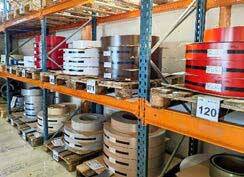
The starting product for slat production is pre-painted aluminium strips in numerous colours.
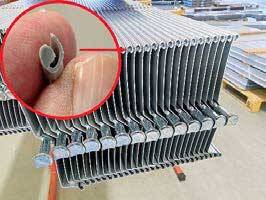
A plastic profile is rolled into the outer edge of the aluminium slats to protect against rattling noises and paint damage.
‘In this precarious situation, Mr Ottiger asked us in April 2022 if we could help him with his problem’, recalls Christoph Solenthaler, Technical Consultant at mobil Kunststoffprofile. It was immediately clear to him that this matter could not be taken lightly. For example, when you are stacking 25 slats on top of each other, tolerance deviations of just plus or minus 0.1 mm add up to height differences of 2.5 mm between the front and rear edges of the slat stack. As a result, the ‘skewed’ stack massively disrupts the appearance of a partially mounted blind.
Therefore, he first asked for a drawing of the piping and a selection of ‘good’ and ‘bad’ samples and consulted his colleagues from development and production at length. Everyone realised that it would be difficult, but ultimately decided to take on the challenge.
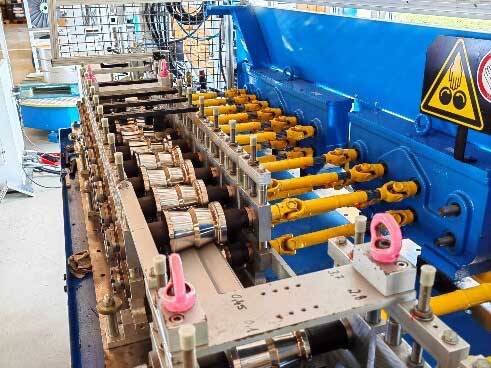
The originally flat aluminium strip emerges here at the front edge of the picture as a semi-finished slat from the first frames of the polished rollers of the rolling mill.
‘Our technicians first produced a suitable extrusion tool and began producing samples in small quantities on separate coils’, says Christoph Solenthaler. HDPE was used as the material. A wide range of processing parameters for the extrusion process were attempted in numerous trials. Modifications to the mould were also made. The produced batches were then processed at Lam-In Bau on a trial basis. During this phase of joint development, there were unfortunately several disappointments, but also positive results. One ‘good’ coil was followed by another bad one, and it was almost impossible to tell which parameters were decisive. Fortunately for both development partners, they had the will, the time, the money and the patience to invest in the project.
‘I was particularly impressed when, after a few more failures, I was told that a Mr Lang would bring over some new rolls at eight o’clock on Saturday morning’, recalls Hanspeter Ottiger. He did not realise until much later that this was not an employee of the forwarding department, but the managing partner himself, who brought him his test samples early on Saturday morning after a 150 km drive. It would be hard to imagine a more impressive proof of the serious commitment of mobil Kunststoffprofile to this joint project.
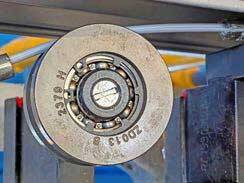
The piping profile fed from a large coil is threaded into the rolling mill from below via a deflection roller shortly before the edge of the slat is formed.
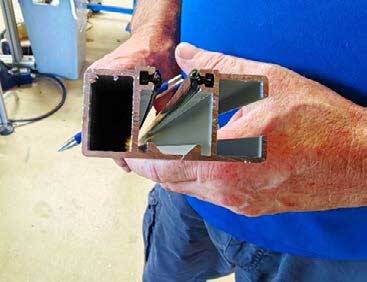
Mobil Kunststoffprofile was also able to solve problems with these piping profiles, which act as sliding surfaces in the lateral guide rails of the blinds.
‘Ultimately we were able to tackle all the issues and now I’m continuously supplied with a product that fulfils my requirements’, says Hanspeter Ottiger happily. Mobil Kunststoffprofile was also able to help him with another piping that is pulled into the two aluminium side guide rails. This piping serves as a sliding surface for the lateral guide bolts to the right and left of the blind slats. It prevents direct contact between the metal parts and thus mutual wear of the rail and bolts. There were problems inserting this piping into the rails due to small dimensional differences between the two rail types used by the company. Mobil Kunststoffprofile was also able to present a working solution to this problem after a brief development phase. ‘Compared to the previous supplier, I have now found a partner who speaks the same language and shares the same quality awareness with an excellent customer focus. Furthermore, it is also located relatively close by’, summarises Hanspeter Ottiger.
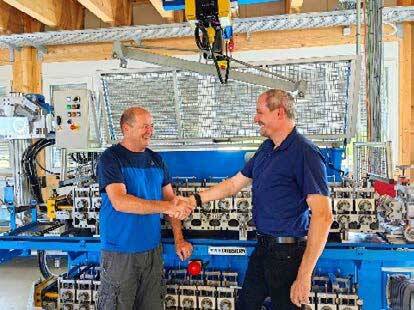
Lam-In Bau business owner Hanspeter Ottiger (links) and Christoph Solenthaler (technical consultant/ sales at mobil Kunststoffprofile) are delighted with the success of the development project.
Lam-In Bau AG
Mettenfeldring 6, CH-5642 Mühlau/AG, T: +41-56-677-8185,
info@laminbau.ch, www.laminbau.ch
Effective noise damping
Plastic profiles prevent metal components from colliding and the associated noise.
Low wear
The use of plastic profiles prevents rail and pin wear.
Precise production
The customer benefits from the long-term stable quality of the plastic profiles for their aluminium slat blinds.